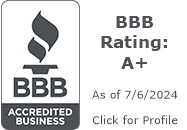Embarking on the journey to homeownership can be both exciting and daunting. Understanding the mortgage process is essential to ensure a smooth and stress-free experience. This comprehensive guide will walk you through the key stages of getting a mortgage, from pre-approval to closing, so you can be well-prepared and confident as you navigate your home buying journey.
- Pre-Approval: The First Step
The mortgage process begins with pre-approval, which is crucial for determining how much you can afford to borrow. During pre-approval, the lender will assess your financial situation, including your income, credit score, debts, and assets. Here’s what to expect:
- Gather Financial Documents: Be prepared to provide documents such as pay stubs, tax returns, bank statements, and proof of assets.
- Credit Check: The lender will perform a credit check to evaluate your creditworthiness.
- Pre-Approval Letter: If you meet the lender’s criteria, you’ll receive a pre-approval letter stating the loan amount you qualify for, which strengthens your position as a serious buyer.
- Finding the Right Home
With a pre-approval letter in hand, you can start your home search with a clear understanding of your budget. Here are some tips for finding the right home:
- Work with a Realtor: A knowledgeable realtor can help you find properties that meet your criteria and guide you through the negotiation process.
- Visit Properties: Attend open houses and schedule private viewings to get a feel for different homes and neighborhoods.
- Make an Offer: Once you find a home you love, work with your realtor to make a competitive offer based on market conditions and comparable sales.
- The Loan Application Process
Once your offer is accepted, it’s time to formally apply for a mortgage. This stage involves providing more detailed information to the lender:
- Complete the Loan Application: Fill out the mortgage application form, providing detailed information about your financial situation, employment history, and the property you wish to purchase.
- Submit Supporting Documents: You’ll need to submit additional documents, such as updated pay stubs, bank statements, and any other requested information.
- Loan Estimate: The lender will provide you with a Loan Estimate, which outlines the terms of the loan, including the interest rate, monthly payments, and closing costs. Review this document carefully.
- Home Appraisal and Inspection
Before the lender approves your loan, they will require a home appraisal and inspection to ensure the property’s value and condition:
- Home Appraisal: An independent appraiser will evaluate the property to determine its market value. This protects the lender by ensuring the home is worth the loan amount.
- Home Inspection: Hire a professional home inspector to assess the property’s condition, identifying any potential issues that may need to be addressed before closing. Use the inspection report to negotiate repairs or concessions with the seller if necessary.
- Underwriting: The Lender’s Review
During underwriting, the lender closely examines your financial situation and the property details to determine whether to approve your loan:
- Verification: The underwriter will verify your income, employment, assets, and debts to ensure you can afford the mortgage payments.
- Assessment: The underwriter will review the appraisal and inspection reports to confirm the property’s value and condition.
- Conditional Approval: If the underwriter has any concerns, they may issue conditional approval, requiring you to provide additional information or documentation.
- Closing: Finalizing the Purchase
Once your loan is approved, you’ll move to the closing stage, where you’ll sign the final documents and take ownership of the home:
- Review Closing Disclosure: A few days before closing, you’ll receive the Closing Disclosure, which provides a detailed account of your loan terms, closing costs, and the amount of cash you need to bring to closing. Review this document carefully and compare it to the Loan Estimate to ensure accuracy.
- Final Walk-Through: Conduct a final walk-through of the property to ensure it’s in the agreed-upon condition and any requested repairs have been completed.
- Closing Day: On the day of closing, you’ll sign a series of legal documents, including the mortgage agreement, promissory note, and deed of trust. You’ll also pay your closing costs and down payment.
- Receiving the Keys: Once all documents are signed and funds are transferred, you’ll receive the keys to your new home.
- Post-Closing: Managing Your Mortgage
After closing, it’s important to manage your mortgage responsibly to maintain your financial health:
- Set Up Payments: Arrange for your mortgage payments to be made on time each month, either through automatic payments or manual payments.
- Keep Records: Maintain copies of all your mortgage documents and statements for future reference.
- Stay Informed: Keep an eye on interest rates and consider refinancing if rates drop significantly, which could save you money over the life of the loan.
Conclusion: Understanding the mortgage process is crucial for making informed decisions and ensuring a smooth home buying experience. By familiarizing yourself with each step, from pre-approval to closing, you can navigate the mortgage process with confidence and ease. Remember, working with knowledgeable professionals, such as realtors and lenders, can provide valuable guidance and support throughout your journey. With the right preparation and understanding, you’ll be well on your way to securing your dream home.






